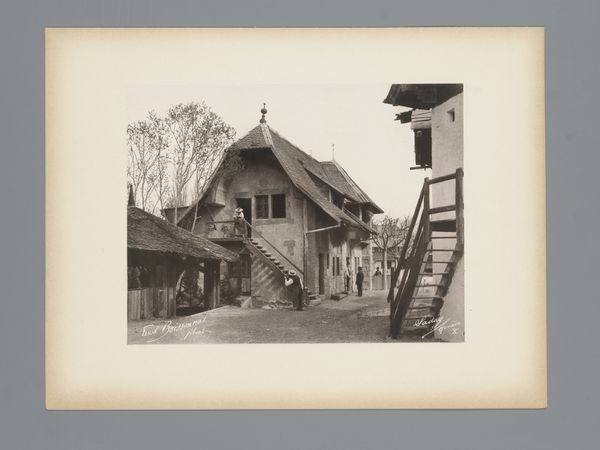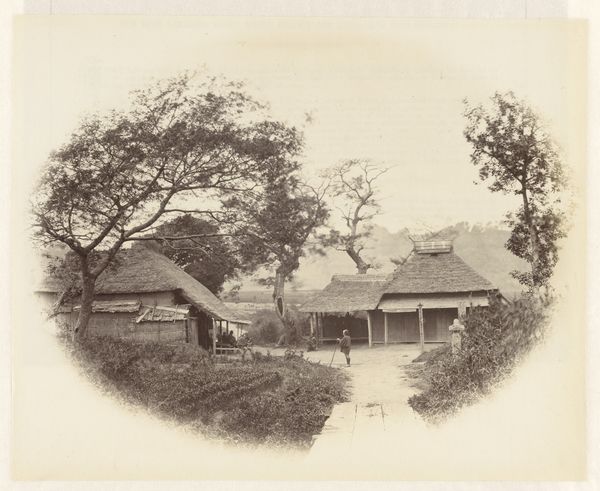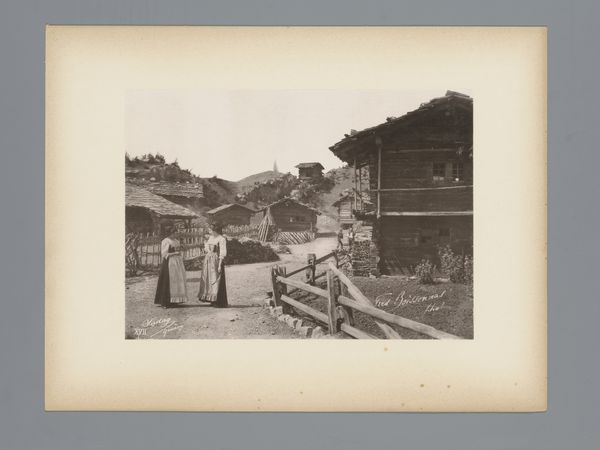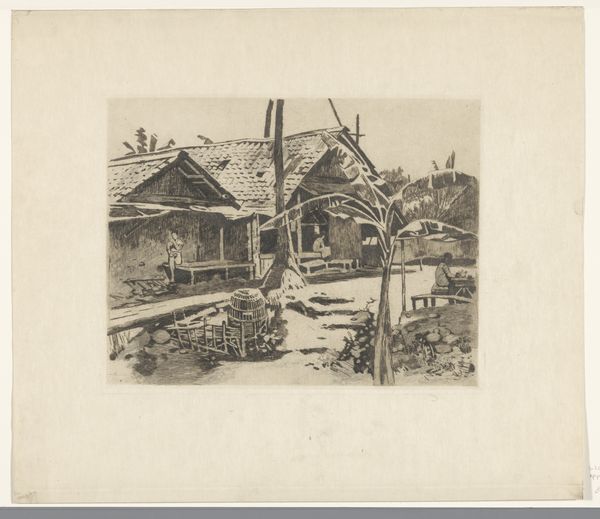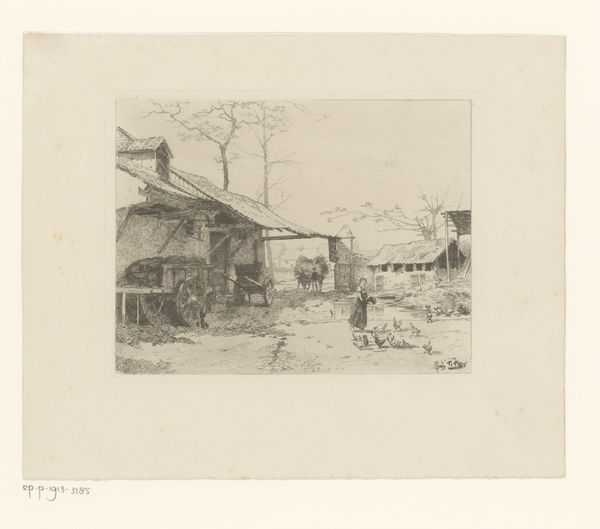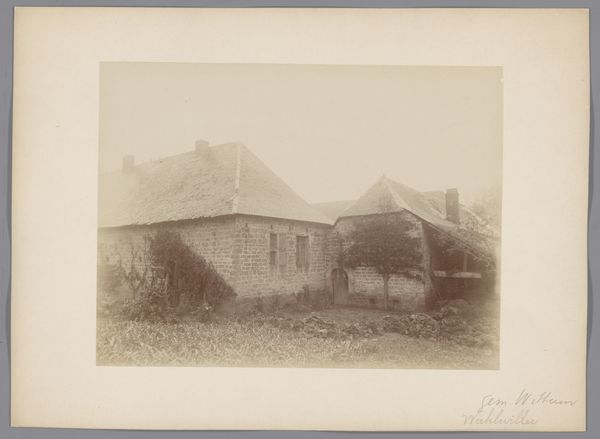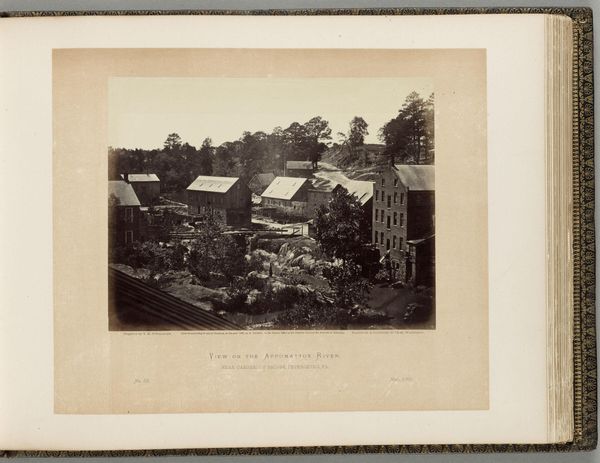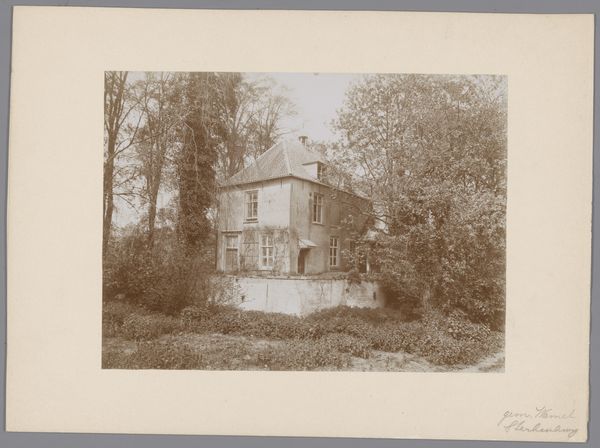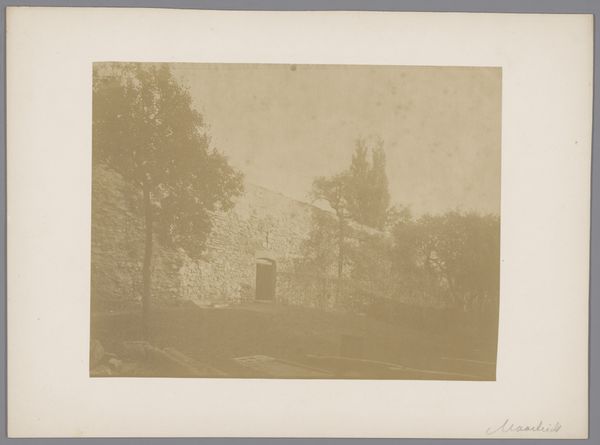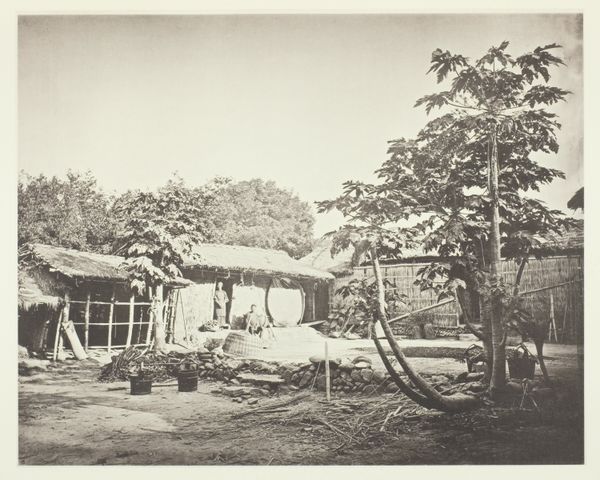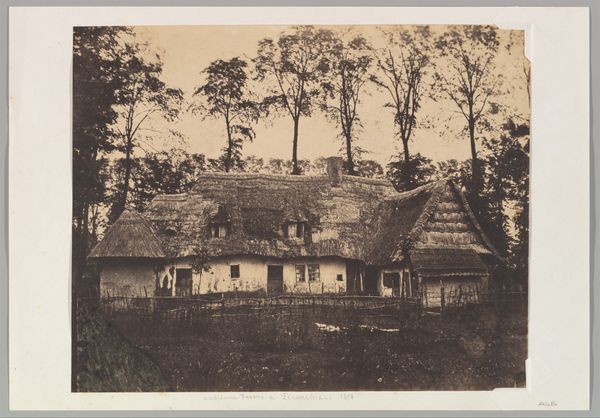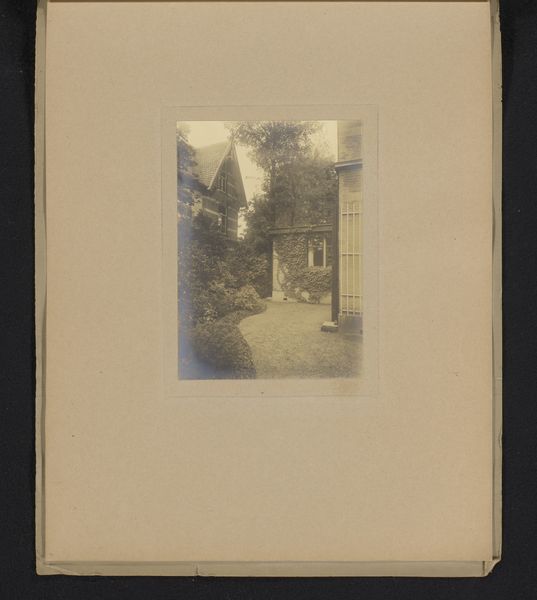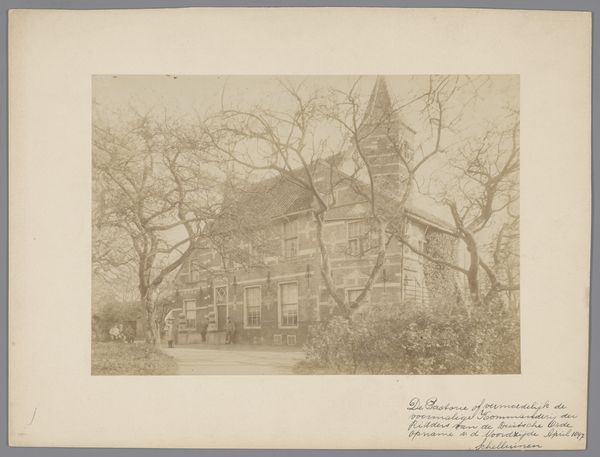
print, photography, gelatin-silver-print
#
pictorialism
# print
#
landscape
#
photography
#
gelatin-silver-print
#
cityscape
Dimensions: height 156 mm, width 220 mm
Copyright: Rijks Museum: Open Domain
Curator: Here we have Frédéric Boissonnas' "Dorpsgezicht te Langnau," a gelatin silver print predating 1896. Editor: My first impression? An almost tangible quietude. The monochrome tones evoke a wistful sense of time standing still. The composition, quite balanced, invites the eye to wander through the village scene, but the textural details, the surface of this gelatin print, seem to amplify the rustic, rural nature depicted in the image. Curator: Boissonnas, known for his Pictorialist approach, elevates photography here. The soft focus, particularly evident in the background, aims for an atmospheric quality. He’s clearly after more than just documentation. This village becomes an archetype of rural life. We see echoes of debates around urbanization that consumed much of the late nineteenth century, here. Editor: Absolutely. If we look closer, we'll find intricate structures defining the architecture. Notice the contrast in values between light and shadow playing across the textured roofs. Consider, too, the structural organization – how Boissonnas uses a combination of vertical and horizontal forms to establish a perspectival pull that drives our gaze into the distance of this captivating village vista. It feels incredibly deliberate, moving away from strictly representational photography. Curator: Pictorialism gained popularity in the late 1880s, directly pushing against the documentary function ascribed to the relatively young medium of photography. Figures like Boissonnas instead sought to portray the camera as an apparatus to construct something more artistically poignant. Editor: And look, his artistic intent is clear in his handling of light. It subtly diffuses throughout the landscape. These stylistic touches amplify the overall affect: creating a scene of intimate daily life, captured as opposed to simply snapped. But I am left considering how staged, really, is such an ‘affective’ picture, in terms of the socio-economic realities such photography chooses to picture… or ignore. Curator: Well, his selection and careful orchestration of a quiet village surely points towards his artistic and political inclinations— to promote idyllic beauty rather than the complicated realities of the Industrial revolution, for instance. In the end, Boissonnas creates not only a portrait of Langnau, but an idyllic one— framed for posterity. Editor: Yes, in our formalist analysis we see that such compositions can provide more than one angle; from a formal, or from an institutional point of view, even what we can’t readily "see," matters when looking.
Comments
No comments
Be the first to comment and join the conversation on the ultimate creative platform.
